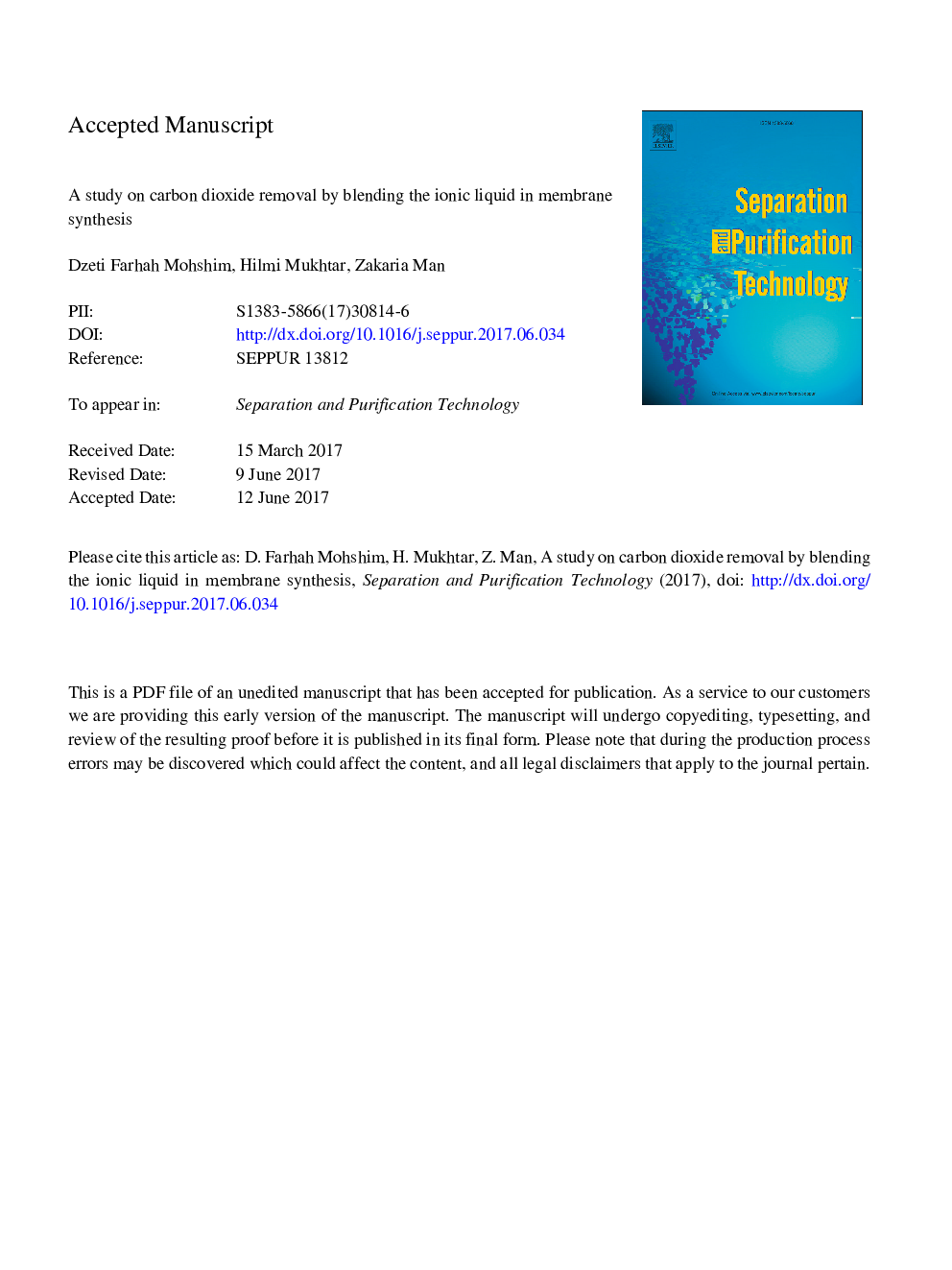| Article ID | Journal | Published Year | Pages | File Type |
|---|---|---|---|---|
| 7043956 | Separation and Purification Technology | 2018 | 18 Pages |
Abstract
The attention in ionic liquids (IL) is driven by its distinctive properties, such as negligible vapour pressure, thermal stability, and tunability of properties. To further grow its application in the separation field, the ionic liquid membranes (ILMs) and its separation technology have been proposed and developed rapidly. This paper presents details of recent research involving the blending of ionic liquid in membrane synthesis for Carbon Dioxide (CO2) removal from Methane (CH4). The low CO2/CH4 separation factor through commercialized membranes is due to the lack of CO2 affinity towards the polymeric membranes and the presence of interfacial voids in the mixed matrix membranes (MMM). The main objective is to study the influence of ionic liquid (IL) addition into the polymer and polymer-inorganic filler towards the membrane properties and performances. This was achieved by blending different concentrations of ILs at a fixed polyethersulfone (PES) and PES-SAPO-34 composition. The membranes were synthesized using dry-phase inversion technique to prevent the voids formation. The synthesized membranes were physico-chemically characterized and the performances of these membranes were evaluated in term of permeance and selectivity. The synthesized membranes were found to have dense and voids-free structure with lower polymer decomposition temperature (â¼410 °C) as compared with pure PES membrane. The presence of ILs in the membranes had significantly increased the permeance of CO2 due to enhanced affinity effect. However, the permeance of CH4 is at the reverse trend due to less CH4 pathway within the membranes. Experimental results showed that both ILs have significant improvement on the ideal selectivity of the synthesized membranes. This significant improvement indicated that ionic liquid is worth to be explored as an alternative material to enhance the CO2 affinity in membranes for CO2 separation from CO2/CH4 mixture.
Related Topics
Physical Sciences and Engineering
Chemical Engineering
Filtration and Separation
Authors
Dzeti Farhah Mohshim, Hilmi Mukhtar, Zakaria Man,
